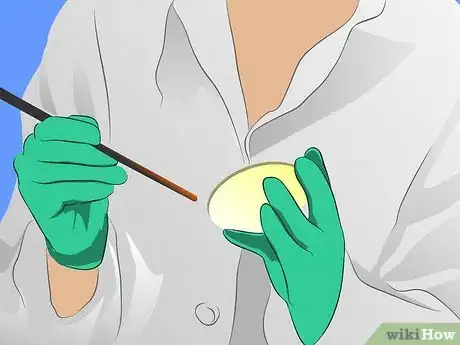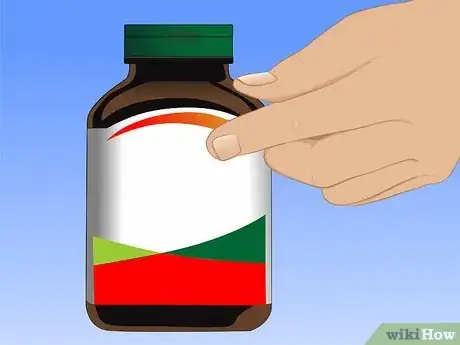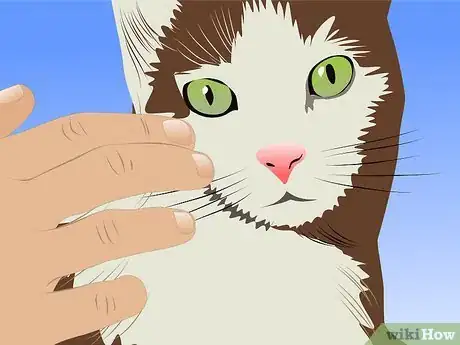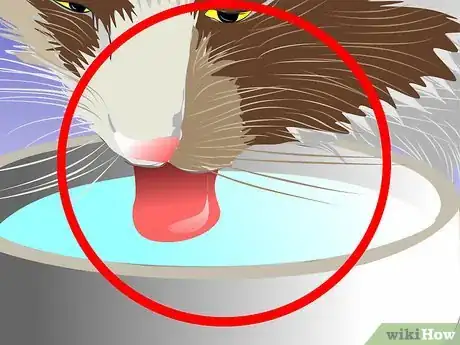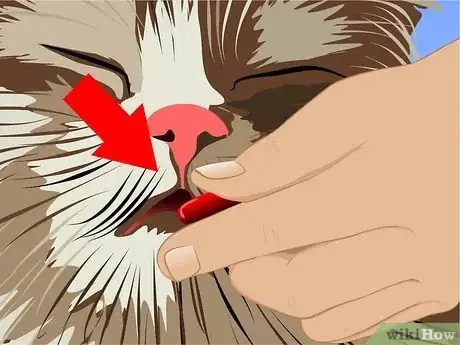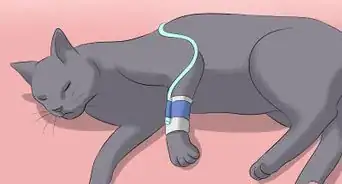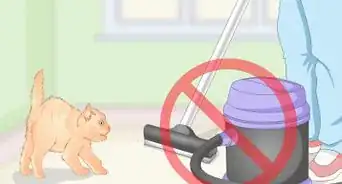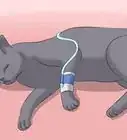This article was co-authored by Lauren Baker, DVM, PhD. Dr. Lauren Baker is a Veterinarian and Assistant Scientist at the University of Wisconsin-Madison. With over 10 years in veterinary medicine, she specializes in the concept of “one health,” which uses insights from veterinary medicine to help human medical research. She holds a Ph.D. in Comparative Biomedical Sciences, a Doctor of Veterinary Medicine, an MS in Comparative Biomedical Sciences, and a Bachelor’s degree in Psychology from the University of Wisconsin-Madison.
There are 8 references cited in this article, which can be found at the bottom of the page.
This article has been viewed 84,855 times.
UTI stands for urinary tract infection, an infection which can occur in felines as well as humans. Treating a UTI without the use of antibiotics is difficult, if not impossible. If you try to clear an infection and only partially succeed, you run the risk of suppressing the symptoms, whilst bacteria are still present. This could lead to a long-term infection that could potentially damage your cat's health. A low grade urinary infection is a ticking time bomb, because the bacteria could travel up to the kidney and cause a more serious infection. When possible, always seek veterinary attention and an appropriate course of antibiotics.
Steps
Using Veterinary Treatment
-
1Get a test culture done to identify and use effective antibiotics. The gold standard when treating a UTI with antibiotics is to perform a test culture to analyze antibiotic sensitivity. Antibiotics are a family of drugs that either inhibit the growth of bacteria or kill them, depending on the type of antibiotic.[1]
- A test culture tells your vet exactly what bug is present, and which antibiotics are effective against it.
- Using targeted antibiosis reduces the risk of inducing antibiotic resistance in bacteria and is the best way to treat an infection.
- However, it is not always possible to get a large enough urine sample to culture or else the cost of culture may be prohibitive. In some cases, the cat will be started on a proven antibiotic that can then be adjusted once the culture results are ready.
- It is especially important to culture the urine if the cat has recurrent UTIs. In this case, it is likely that the cat either has a mixed infection where only some of the infection is being killed, or the infection is resistant to the antibiotic being used.
-
2Treat your cat with broad spectrum antibiotics if a culture is not possible. Broad spectrum antibiotics kill a wide range of bacteria.[2]
- If a cat has never had a urinary infection before, then it is acceptable to put him on a course of broad spectrum antibiotics that kill a wide range of bacteria commonly found in urine.
- Typically, these antibiotics are penicillins, such as amoxicillin, clavulanic acid, cephalosporins, or sulphonamides.
- You will need to go to your veterinarian to get a prescription for antibiotics.
Advertisement -
3Use glucosamine to stimulate the cat's GAG layer. The bladder produces a layer of mucus-like material that acts like a bandage to protective the lining from noxious substances in urine.
- When a cat has a UTI, this glycosaminoglycan or "GAG" layer becomes thinner, exposing the bladder lining to irritation.
- Neutraceuticals such as glucosamine, may help to replenish this GAG layer and make the cat more comfortable.
- Although research into the benefits of glucosamine is inconclusive,[3] it may help and is unlikely to hurt. There are several over-the-counter preparations available, such as "Feliway Cystease" that contain glucosamine and tryptophan. Ask your veterinarian if they will approve starting this supplement.
Using Home Remedies
-
1Understand age's effect on UTI risk. As your cat ages, they will have an increasing level of susceptibility to UTI infection. This is due to changes in your cat's urinary tract and liver function.[4]
- Young cats under 7 years of age have a low risk of urinary infections. This is because they are excellent at concentrating their urine, and strong urine is a natural disinfectant that inhibits bacterial growth.
- If you see signs of blood in a young cat's urine, it is likely that he has a problem not caused by infection, but by crystals, stones, or inflammation from an unknown source that has irritated the bladder lining.
- There is a distinct risk that crystals will clump together and form a blockage in the urethra – the tube the cat urinates out of. If this happens, it is an emergency that needs immediate veterinary attention.
- Older cats over 7 years of age are at an increased risk of infection. Older cats have a reduced ability to concentrate urine, and as the cat ages he is quite likely to produce dilute urine because of a reduction in kidney function.
- This weak urine is not a very potent disinfectant and urinary infections become more likely. Again, it is important to treat these infections before they ascend into the kidney and cause significant damage leading to scar tissue formation.
- Young cats under 7 years of age have a low risk of urinary infections. This is because they are excellent at concentrating their urine, and strong urine is a natural disinfectant that inhibits bacterial growth.
-
2Encourage your cat to drink to flush his bladder. Although dilute urine is risk factor for UTI, once your cat has a UTI, regular, steady urination will help him flush his bladder out.
- Bacteria produce waste products and chemicals that can irritate the bladder lining, causing inflammation.
- Regular hydration can dilute these factors and limit the amount of time they spend in contact with the bladder wall, helping reduce inflammation and soreness.
- To increase your cat's water intake, switch him form a dry to a wet food. This automatically increases the amount of fluid he takes in.
- Also, provide plenty of wide drinking bowls. Cats seem to prefer drinking from wide containers where their whiskers don't touch the side.
- Some cats will drink more if provided with flowing water such as that from a cat drinking fountain.
- Other cats dislike the chlorine and chemicals in tap water and are much happier when offered bottled water to drink.
-
3Feed your cat cranberry capsules or ascorbic acid to acidify urine. Some veterinarians recommend cranberry capsules to reduce the risk of a UTI. The cranberry extract contain proanthocyanidins, which may make it more difficult for bacteria to adhere to the bladder wall.[5]
- Consult your vet before starting any supplement in your cat. Your vet will approve the supplement and instruct you on an appropriate dose.
- Do not be tempted to increase the amounts of these supplements, because there is a risk of reducing the urinary pH too much and the extreme acidity could irritate the bladder lining.
References
- ↑ http://www.merckvetmanual.com/pharmacology/systemic-pharmacotherapeutics-of-the-urinary-system/bacterial-urinary-tract-infections
- ↑ http://www.merckvetmanual.com/pharmacology/systemic-pharmacotherapeutics-of-the-urinary-system/bacterial-urinary-tract-infections
- ↑ http://skeptvet.com/Blog/2011/06/study-on-glucosamine-for-feline-interstitial-cystitis-does-not-suggest-any-benefit/
- ↑ http://www.merckvetmanual.com/pharmacology/systemic-pharmacotherapeutics-of-the-urinary-system/bacterial-urinary-tract-infections
- ↑ http://www.preventivevet.com/cats/cranberry-and-your-pets-urinary-health
- Bacterial urinary tract infections – Disorders of the feline urinary tract. G. E. Less. VCNASA
- Treatment of feline lower urinary tract disease. D Gunn-Moore. UK Vet 6(5) p27-30
- Pathophysiology of feline lower urinary tract disease. UK Vet 6(5) p 20-26
About This Article
To treat a cat’s UTI, start by taking it to the vet to have it tested and get an antibiotic that will treat the UTI effectively. Additionally, switch your cat from dry food to wet food to increase its water intake, which helps flush out the bladder. You can also feed your cat cranberry capsules or ascorbic acid to make it more difficult for the bacteria that cause UTIs to stick to the bladder wall. However, make sure to check with your vet before starting your cat on any supplement to ensure you give it the correct dosage. For more information from our Veterinary reviewer, like how to assess your cat’s risk of getting a UTI based on its age, read on!
